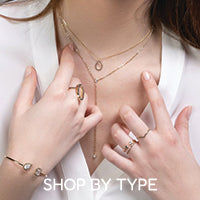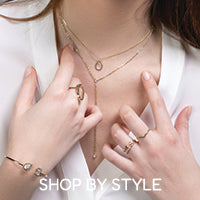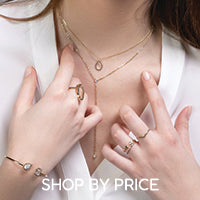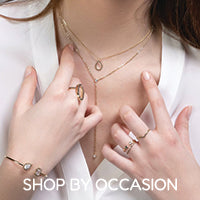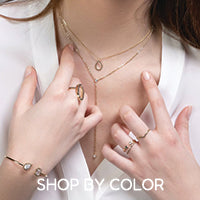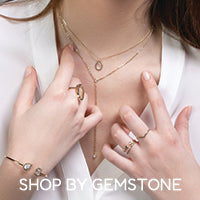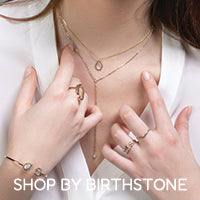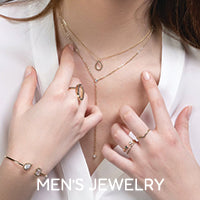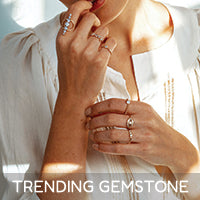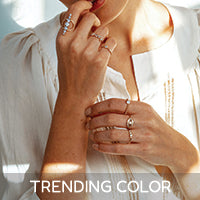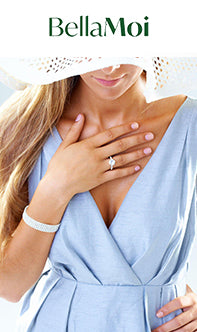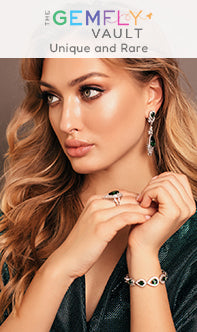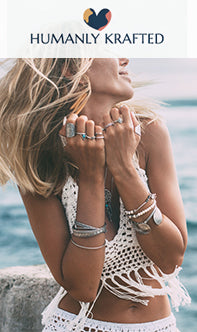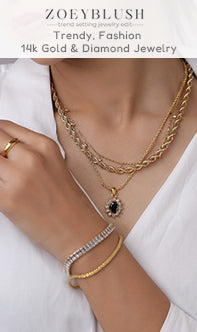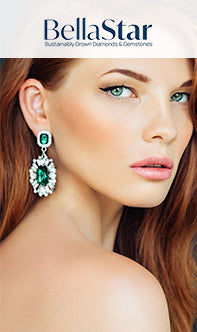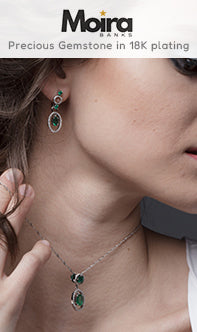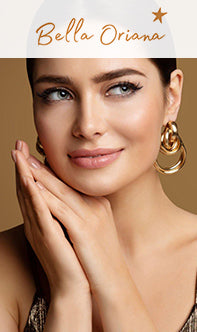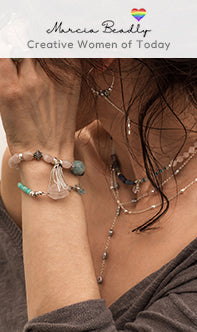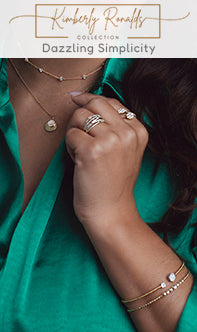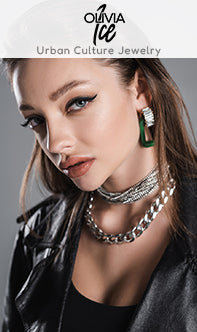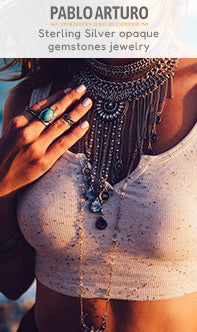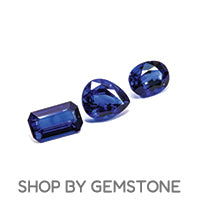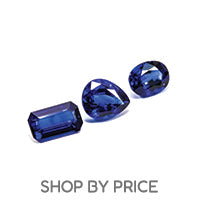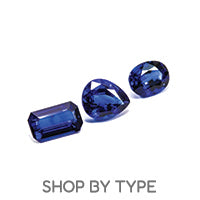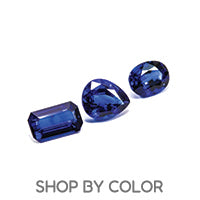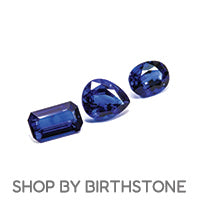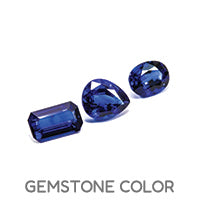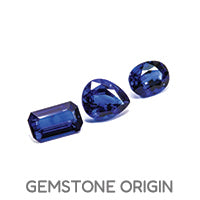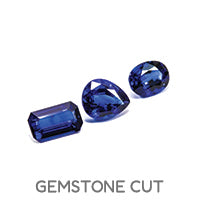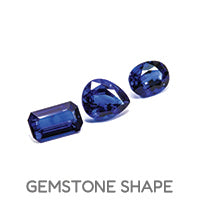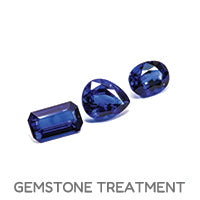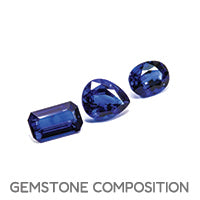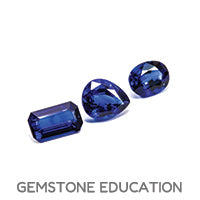Diamond Grade
Similar to snowflakes, each diamond possesses its own distinct characteristics. Skilled cutters meticulously work to highlight these unique features, aiming to maximize the inherent beauty of each stone. Every gem is assessed against a set of standards known as the 4 Cs – cut, color, clarity, and carat – which collectively determine the overall rating and quality of the diamond.
While the cut, color rating, clarity grade, and carat weight play pivotal roles in assessing diamond quality, there isn't a singular "right answer" regarding how a diamond should appear. Preferences can vary, and those seeking a stunning piece of jewelry are often open to prioritizing one factor over another based on individual prefer
What Is Diamond Shape?
Diamonds come in various shapes, with the Round Brilliant cut standing out from other "fancy" cuts like Princess, Emerald, Oval, and more. The Round Brilliant cut is undoubtedly the most refined and extensively studied, with optimal proportions carefully examined. This classic and universal shape carries profound symbolism associated with its round form.
"Fancy" cuts, encompassing various shapes, are typically more budget-friendly than their round counterparts, which are often trickier to assess. The pricing of fancy cuts is significantly influenced by the quality of proportions and size. When choosing the shape of a cut diamond, factors such as the original rough diamond's shape and the placement of inclusions play a crucial role in the decision-making process.

Round

Oval

Cushion

Pear

Princess

Emerald

Marquise

Asscher

Heart
What Are Natural Diamonds?
Billions of years in the past, deep beneath the Earth's surface, clusters of carbon atoms underwent intense compression, forming a cubic crystalline structure. This structure established a tetrahedral bond, connecting each atom to four others, resulting in the creation of the hardest and most conductive natural material known. Following their formation, these diamonds embarked on a journey through molten rock, propelled by volcanic activity, ultimately depositing these precious stones near the Earth's surface.
Diamond Vs MOISSANITE Vs Lab-grown
Diamond
Moissanite
Lab-Grown
Durability gemstones are measured on the Mohs Scale of Hardness, which assesses a gem’s ability to withstand surface scratching.
Diamonds are the hardest known mineral and receive a 10 on the Mohs Scale of Hardness. Because of this exceptional score, diamonds are very durable and ideal for daily wear. This contributes to their popularity as center gemstones in engagement rings.
On the Mohs scale, Moissanite gemstones are a 9.25 on the Mohs Scale of Hardness, so they are suitable for daily wear.
Lab-grown diamonds also have the same famous Mohs hardness of 10. They're just as durable as natural diamonds, but they're a bit easier on your pocketbook.
Brilliance Refers to the appearance of light reflected from the interior of the gem.
A different type of brilliance is what makes it possible to distinguish a moissanite from a diamond. Diamonds reflect light in three different ways. the white light reflected back is referred to as brilliance, while the rainbow of colors refracted through the diamond is referred to as dispersion. The surface sparkle of a diamond, known as scintillation, is a third type of diamond light return. the combination of these three gives diamonds their famous sparkle.
Moissanites exhibit a different kind of brilliance than diamonds do, as their faceting pattern is different. the fiery, rainbow flashes emitted by moissanites are beloved by some, but others feel that moissanites heightened brilliance can create a “disco ball” effect, especially in sunlight. The bigger the moissanite, the more likely it is that the difference will be noticeable. Moissanite has a refractive index from 2.65 – 2.69, which is higher than a natural diamond.
Brilliance refers to the captivating play of light within lab-created diamonds, creating both white light reflection (brilliance) and a spectrum of colors (dispersion). Surface sparkle, known as scintillation, completes the trio, defining the radiant allure that distinguishes lab-created diamonds.
Color is the natural coloror lack of color visible within a gemstone.
A colorless diamond, whether natural or lab created, has a natural body color that contains no traces of yellow, brown, or grey, resulting in a dazzling, bright white appearance.
While moissanites are labeled as “colorless”, the gems can still project a yellow or grayish hue in certain lights. Here again, the larger the moissanite, the more noticeable the color.
These diamonds are created in a lab setting in traditional white color. They are also more eco-friendly and often more affordable than natural diamonds. Lab-grown diamonds can indeed have color, just like natural diamonds.
Price
Natural diamonds prices vary based on shape, carat, cut, color, and clarity.
For the same size from the top view, moissanites are dramatically lower in pricing than diamonds of that size. Moissanite gems typically vary in price only based on size and whether the stone is Premium or Super Premium.
Lab-grown diamonds have surged in popularity recently, offering a more affordable alternative to natural diamonds.
Sourcing
Mined from the Earth's mantle, natural diamonds undergo ethical sourcing practices, ensuring the well-being of communities and ecosystems.
Known for its brilliance, moissanite is either found in trace amounts naturally or synthesized in labs, providing an eco-friendly choice for stunning jewelry.
Created in controlled environments, lab-grown diamonds offer a sustainable alternative to traditional mining, with identical properties to natural diamonds.
| Diamond | Moissanite | Lab-Grown | |
|---|---|---|---|
| Durability gemstones are measured on the Mohs Scale of Hardness, which assesses a gem’s ability to withstand surface scratching. | Diamonds are the hardest known mineral and receive a 10 on the Mohs Scale of Hardness. Because of this exceptional score, diamonds are very durable and ideal for daily wear. This contributes to their popularity as center gemstones in engagement rings. | On the Mohs scale, Moissanite gemstones are a 9.25 on the Mohs Scale of Hardness, so they are suitable for daily wear. | Lab-grown diamonds also have the same famous Mohs hardness of 10. They're just as durable as natural diamonds, but they're a bit easier on your pocketbook. |
| Brilliance Refers to the appearance of light reflected from the interior of the gem. | A different type of brilliance is what makes it possible to distinguish a moissanite from a diamond. Diamonds reflect light in three different ways. the white light reflected back is referred to as brilliance, while the rainbow of colors refracted through the diamond is referred to as dispersion. The surface sparkle of a diamond, known as scintillation, is a third type of diamond light return. the combination of these three gives diamonds their famous sparkle. | Moissanites exhibit a different kind of brilliance than diamonds do, as their faceting pattern is different. the fiery, rainbow flashes emitted by moissanites are beloved by some, but others feel that moissanites heightened brilliance can create a “disco ball” effect, especially in sunlight. The bigger the moissanite, the more likely it is that the difference will be noticeable. Moissanite has a refractive index from 2.65 – 2.69, which is higher than a natural diamond. | Brilliance refers to the captivating play of light within lab-created diamonds, creating both white light reflection (brilliance) and a spectrum of colors (dispersion). Surface sparkle, known as scintillation, completes the trio, defining the radiant allure that distinguishes lab-created diamonds. |
| Color is the natural coloror lack of color visible within a gemstone. | A colorless diamond, whether natural or lab created, has a natural body color that contains no traces of yellow, brown, or grey, resulting in a dazzling, bright white appearance. | While moissanites are labeled as “colorless”, the gems can still project a yellow or grayish hue in certain lights. Here again, the larger the moissanite, the more noticeable the color. | These diamonds are created in a lab setting in traditional white color. They are also more eco-friendly and often more affordable than natural diamonds. Lab-grown diamonds can indeed have color, just like natural diamonds. |
| Price | Natural diamonds prices vary based on shape, carat, cut, color, and clarity. | For the same size from the top view, moissanites are dramatically lower in pricing than diamonds of that size. Moissanite gems typically vary in price only based on size and whether the stone is Premium or Super Premium. | Lab-grown diamonds have surged in popularity recently, offering a more affordable alternative to natural diamonds. |
| Sourcing | Mined from the Earth's mantle, natural diamonds undergo ethical sourcing practices, ensuring the well-being of communities and ecosystems. | Known for its brilliance, moissanite is either found in trace amounts naturally or synthesized in labs, providing an eco-friendly choice for stunning jewelry. | Created in controlled environments, lab-grown diamonds offer a sustainable alternative to traditional mining, with identical properties to natural diamonds. |
Shop Our Diamond Collection
Diamond Care
Diamond stands as the Earth's hardest natural substance, capable of cutting through any type of rock or metal. Interestingly, only another diamond possesses the ability to cut a diamond. Remarkably resilient, a diamond requires extremely high temperatures, ranging between 1290-1650 degrees Fahrenheit, to be burned. Surprisingly, the mere touch of a human finger, depositing oil, can cause dirt to accumulate and swiftly diminish the sparkling allure of this nearly indestructible gemstone.
1.HANDLE YOUR DIAMOND SPARINGLY Diamonds are natural magnets for grease, so they’re not easy to keep clean. When a diamond is handled, the oils from your fingers adhere to the diamond’s surface and affect its brilliance and fire.
2. CLEAN YOUR DIAMOND REGULARLY A simple plan to keep your diamond jewelry looking beautiful is to soak it in a gentle degreasing solution, such as water with a few drops of mild dish soap, once or twice a week. After you remove the diamond from the cleaning solution, use a soft, clean toothbrush to remove any remaining dirt. The toothbrush should be new and reserved exclusively for cleaning your jewelry. Use it to clean hard-to-reach places like the back of the diamond, which tends to collect the most oil and dirt.
3.USE A GENTLE TOUCH Fragile settings, like older prongs in antique jewelry or a tension setting where the diamond is held in place by pressure from the shank, shouldn’t be vigorously scrubbed, so be gentle with the toothbrush. Then, just rinse your diamond jewelry with water and dry with a soft, lint-free cloth. If you’re working over a sink, make sure to close the drain.
4.DON’T USE HARMFUL SOLUTIONS Chlorine bleach or abrasives (such as household cleansers or toothpaste) should never be used when cleaning diamond jewelry. Chemicals like chlorine can damage some of the metals used to alloy gold for diamond settings and abrasives can scratch gold and other metals.




















































